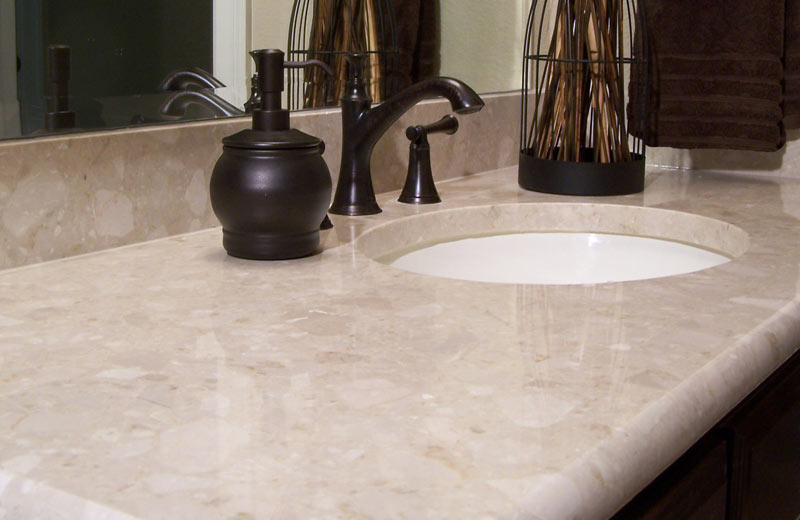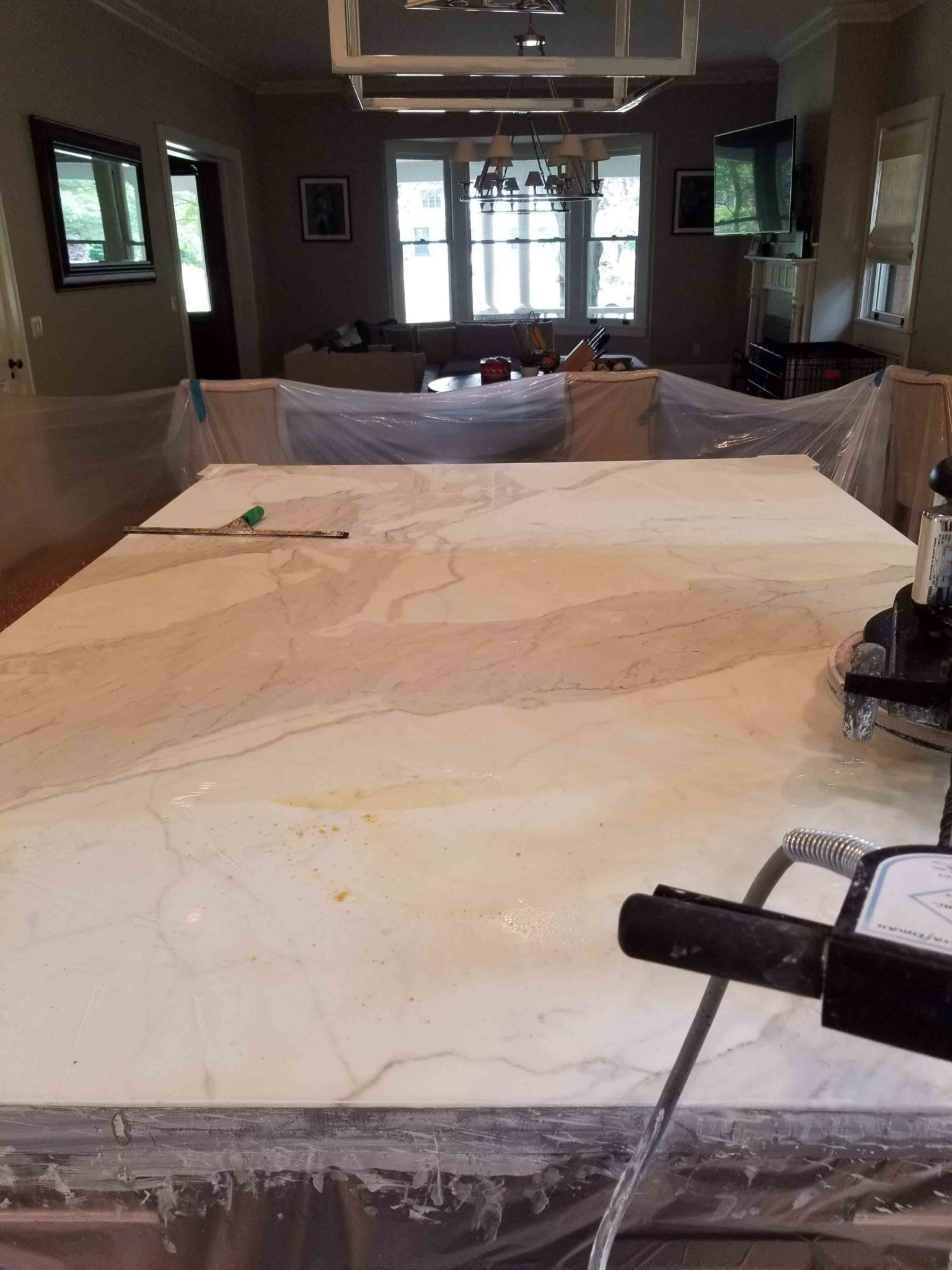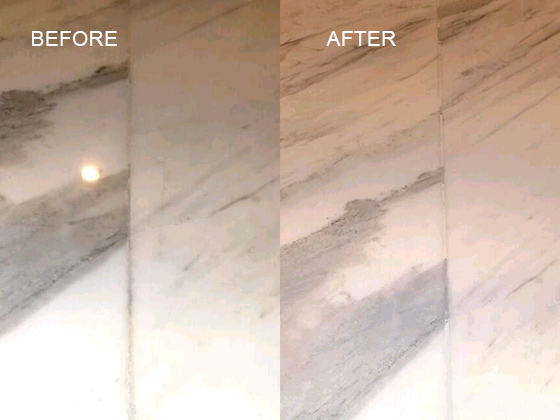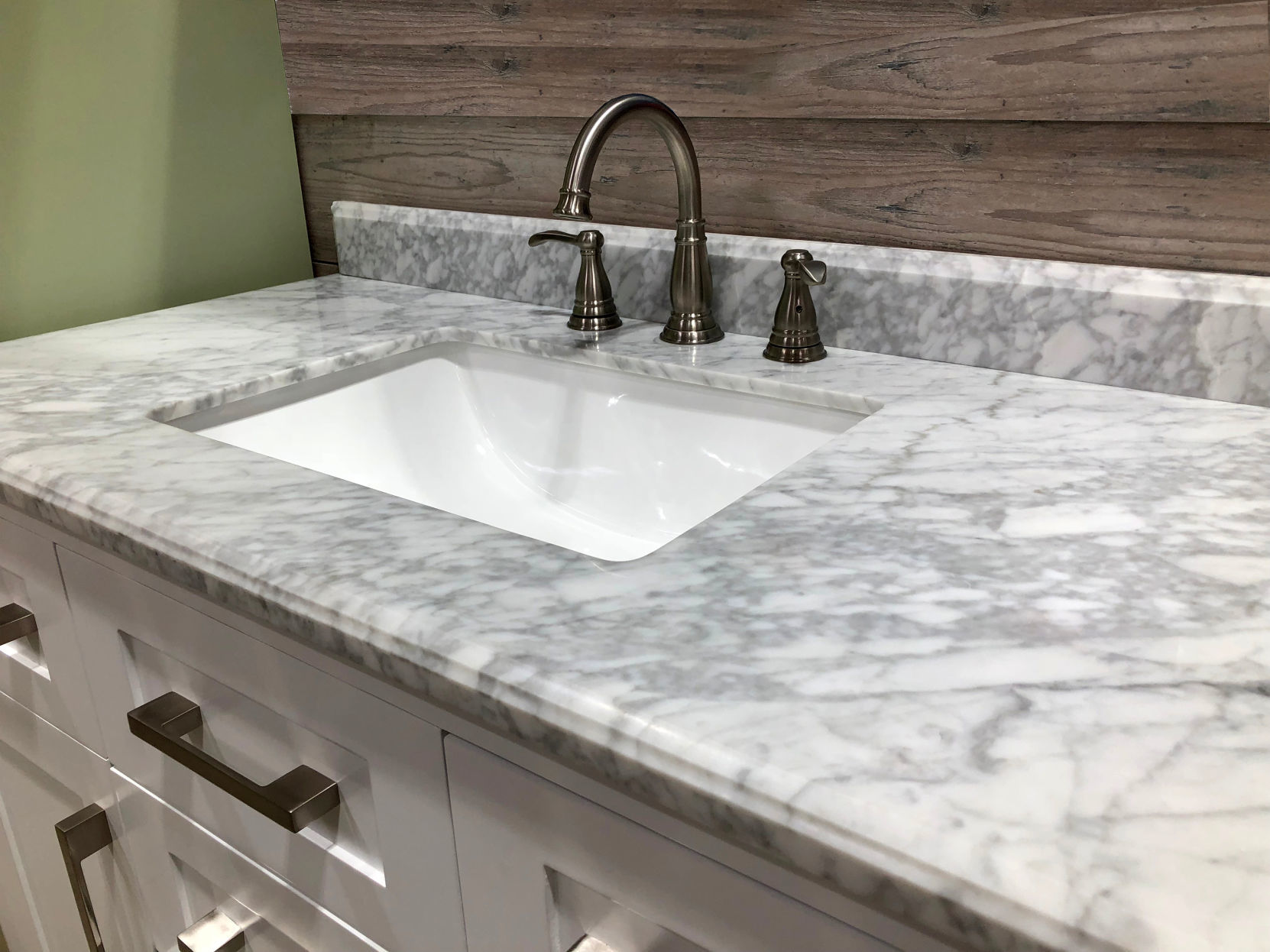Repairing a marble countertop requires a delicate balance of technique and patience, as marble is a natural stone that is both beautiful and susceptible to damage. Over time, even the most well-maintained marble surfaces can develop scratches, stains, chips, or cracks. Understanding the nature of marble is crucial to effectively addressing these issues. Marble is a softer stone compared to granite, which means it can be more prone to damage from everyday use. However, this also means that with the right approach, many common types of damage can be repaired at home, restoring the marble to its former glory.
The first step in repairing a marble countertop is to assess the type and extent of the damage. Scratches, for instance, can range from light surface marks to deeper gouges that require more intensive treatment. For minor scratches, a polishing powder specifically designed for marble can often do the trick. I find that applying the powder with a damp cloth and rubbing it gently over the scratch in a circular motion can effectively buff out the mark. For deeper scratches, however, a more thorough sanding process may be necessary. This involves using progressively finer grades of sandpaper to smooth out the scratch, followed by polishing to restore the marble’s shine.
Stains on marble countertops are another common issue, often caused by spills of acidic substances like wine, coffee, or citrus juices. Marble is porous and can absorb liquids, leading to unsightly stains if not cleaned up immediately. To tackle stains, I recommend using a poultice—a paste made from a powder like baking soda mixed with water or a solvent. The poultice is applied over the stain, covered with plastic wrap, and left to sit for 24 to 48 hours. During this time, the poultice draws the stain out of the marble. After removing the poultice, it’s important to clean the area thoroughly and reseal the marble to prevent future staining.
Chips and cracks in marble can be more challenging to repair but are not impossible with the right tools and materials. For small chips, a clear epoxy or resin can be used to fill the void. I usually recommend choosing a product that is designed for use with stone, as this will provide the best adhesion and blend with the marble’s natural veining. After filling the chip, the area should be sanded smooth and polished to match the surrounding surface. Cracks, especially those that are deep or extensive, might require professional repair. However, for minor cracks, a similar approach with epoxy can be effective. The key is to apply the epoxy carefully, ensuring it penetrates the crack fully before allowing it to cure and then sanding and polishing as needed.

Etching is another common problem with marble countertops. This occurs when acidic substances come into contact with the marble, causing a dull spot or a mark that looks like a stain but is actually damage to the stone’s surface. To repair etching, a marble polishing compound can often be used to restore the shine. This process involves gently buffing the etched area with the compound and a soft cloth until the mark disappears. For more severe etching, a refinishing process that includes sanding and polishing may be necessary. I find that regular sealing and careful cleaning can help prevent etching from occurring in the first place, as well-sealed marble is less likely to react with acids.
One important aspect of repairing marble countertops is ensuring that the repaired area blends seamlessly with the rest of the surface. Marble is a natural stone, which means that each piece has unique patterns and colors. This can make matching repairs tricky, especially with more visible damage. When using fillers like epoxy or resin, I always try to choose a color that closely matches the marble’s natural veining. Sometimes, adding a bit of marble dust to the epoxy before applying it can help achieve a more natural look. After the repair, polishing the entire surface rather than just the repaired area can help ensure a uniform finish.
Regular maintenance plays a key role in minimizing the need for repairs. Marble is a high-maintenance material that requires regular sealing to protect against stains and etching. I recommend sealing marble countertops at least once a year, or more often if the marble is in a high-use area like a kitchen. Sealing helps create a protective barrier that reduces the stone’s porosity and makes it easier to clean up spills before they can cause damage. In addition to sealing, using coasters, cutting boards, and trivets can also protect the marble from scratches, stains, and heat damage.

If the damage to a marble countertop is extensive, such as large cracks or deep gouges, it might be time to consider professional restoration. While many minor repairs can be handled at home with the right tools and products, professional restoration services have the expertise and equipment to handle more significant damage. They can grind down the surface to remove deep scratches or refinish the entire countertop to restore its original luster. I usually advise consulting with a professional if the repair feels beyond your skill level or if the marble has significant sentimental or financial value.
Polishing is a crucial part of the repair process for marble countertops. After addressing any scratches, stains, or chips, polishing helps to restore the marble’s natural shine and smooth surface. This can be done using a specialized marble polishing powder or paste, applied with a soft cloth or a low-speed polisher. The polishing process requires patience, as it can take several passes to achieve the desired result. I find that working in small sections and using even pressure helps to avoid streaks or uneven finishes. After polishing, wiping down the countertop with a damp cloth removes any residue, leaving the marble gleaming.
Another aspect to consider when repairing marble countertops is the potential for color enhancement. Over time, marble can become dull or faded due to wear and exposure to sunlight. To rejuvenate the color, color-enhancing sealers can be applied. These products not only protect the marble but also bring out the natural colors and patterns in the stone, giving it a richer, more vibrant appearance. I usually recommend testing the sealer on a small, inconspicuous area first to ensure it provides the desired effect before applying it to the entire countertop.
Cleaning after repairs is an essential step to ensure the longevity of the repairs and the marble surface. Using a pH-neutral cleaner specifically designed for stone surfaces helps to avoid damage to the newly repaired and polished marble. Harsh chemicals or abrasive cleaners should be avoided, as they can strip away the sealer or cause new scratches. I always prefer to clean marble with a soft cloth or sponge and a gentle cleaner, followed by drying the surface thoroughly to prevent water spots.

For those looking to repair marble countertops themselves, it’s important to gather all the necessary tools and materials before starting. This typically includes items like marble polishing powder, epoxy or resin, sandpaper in various grits, a soft cloth, and a marble cleaner and sealer. Having everything on hand before you begin makes the process smoother and less stressful. I also recommend wearing protective gear, like gloves and safety glasses, especially when working with chemicals or power tools. Taking the time to prepare properly can make a big difference in the outcome of the repair.
Patience is key when repairing marble countertops. Each step, from cleaning and preparing the surface to applying fillers and polishing, requires careful attention to detail. Rushing through the process can lead to uneven finishes, noticeable repair marks, or even additional damage to the marble. I find that taking a methodical approach, working in small sections, and allowing each step to fully dry or cure before moving on to the next, results in a much more satisfying and professional-looking repair.
Finally, understanding that not all marble damage is reversible is important. Some stains, particularly those that have been left untreated for a long time, may be too deeply set to remove completely. Likewise, severe cracks or chips might require more extensive repair work that alters the appearance of the marble. In these cases, it’s important to manage expectations and focus on minimizing the damage and improving the overall appearance rather than achieving a perfect, like-new finish. I always aim to repair marble in a way that enhances its natural beauty while acknowledging the character that comes with age and use.

Common Mistakes to Avoid
When repairing a marble countertop, several common mistakes can hinder the process or even cause further damage. One of the most frequent mistakes is using the wrong type of cleaner. Marble is sensitive to acidic substances, so using a cleaner with vinegar, lemon juice, or other acidic components can cause etching. I always recommend using a pH-neutral cleaner specifically designed for stone surfaces. Another mistake is attempting to repair deep scratches or cracks without the proper tools or materials. Using sandpaper that is too coarse or applying too much pressure can worsen the damage instead of fixing it.
Another common error is not properly sealing the marble after completing repairs. Sealing is crucial to protect the marble from future stains and damage, but some people overlook this step, leaving their countertops vulnerable. It’s also important not to rush the repair process. Allowing each step to fully dry or cure before moving on is essential for achieving a durable and aesthetically pleasing result. Finally, trying to match the color of fillers like epoxy without considering the natural veining of the marble can lead to noticeable repair marks. I always advise taking the time to blend the repair material carefully to match the marble as closely as possible.

How can I remove scratches from my marble countertop?
To remove scratches from a marble countertop, start by assessing the depth of the scratch. For light surface scratches, a marble polishing powder can be effective. Apply the powder with a damp cloth, rubbing gently in circular motions until the scratch fades. For deeper scratches, you may need to sand the area with fine-grit sandpaper, followed by polishing to restore the shine. Always clean the area thoroughly after sanding and consider sealing the marble to protect it from future damage.
What is the best way to clean and maintain a marble countertop after repairs?
After repairing a marble countertop, maintaining it is crucial to keep it looking its best. Use a pH-neutral cleaner specifically designed for marble or stone surfaces to avoid damaging the sealant or stone. Avoid acidic or abrasive cleaners, as they can cause etching or scratches. Regularly clean the countertop with a soft cloth or sponge, and dry the surface after cleaning to prevent water spots. Additionally, reseal the marble at least once a year to protect it from stains and etching.
Can I repair a deep crack in my marble countertop myself?
Repairing a deep crack in a marble countertop can be challenging and may require professional assistance for the best results. However, if you decide to tackle it yourself, use a clear epoxy or resin designed for stone surfaces. Carefully apply the epoxy to fill the crack, ensuring it penetrates fully. Once the epoxy has cured, sand the area smooth and polish it to match the surrounding surface. Keep in mind that large or complex cracks may not blend seamlessly with the rest of the countertop, and professional restoration might be necessary for a flawless finish.

How do I prevent stains on my marble countertop after repairing it?
To prevent stains on your marble countertop, it’s essential to keep the surface sealed. Reseal the countertop after repairs and continue to reseal it regularly, at least once a year. Be diligent about wiping up spills immediately, especially those from acidic or colorful substances like wine, citrus, or coffee, which can stain the marble. Using coasters, trivets, and placemats can also help protect the marble from potential stains. Regular cleaning with a marble-safe cleaner will further protect the surface.
What should I do if my marble countertop gets etched?
If your marble countertop gets etched, you can repair the damage by using a marble polishing compound. Etching occurs when acidic substances react with the marble, leaving dull spots or marks. To restore the shine, apply the polishing compound with a soft cloth and gently buff the etched area. For severe etching, you may need to sand the surface with very fine-grit sandpaper before polishing. After repairing the etching, it’s important to reseal the marble to prevent future damage.
Is it necessary to seal my marble countertop after every repair?
Yes, sealing your marble countertop after every repair is crucial to protect the surface from future damage. Marble is a porous material, and without a proper sealant, it can easily absorb liquids and stains. After completing any repair, whether it’s filling a crack, removing a stain, or polishing out scratches, apply a high-quality marble sealer to the entire surface. This will help maintain the marble’s appearance and durability, ensuring that your repairs last longer and that the countertop remains protected.
Related articles:
- DIY Refinishing Cultured Marble Countertops
- Marble Countertops In Bathrooms
- Cultured Marble Countertops
- Gray Kitchen Cabinets Marble Countertops
- Modern Kitchen Marble Countertops
- Refinish Cultured Marble Countertop
- Carrara Marble Countertops Bathroom
- Marble Countertops Types
- How To Refinish Marble Countertops
- White Gray Marble Countertops